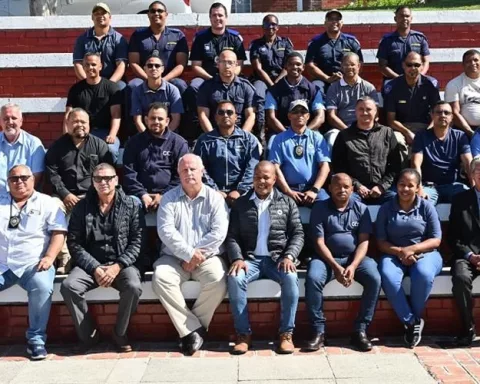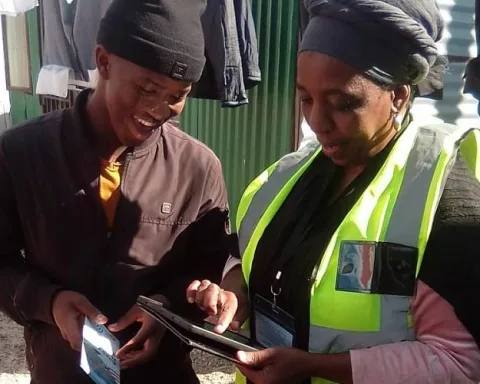The Western Cape Administration is disappointed with the recent surge in homicide rates, particularly in areas identified as high crime by the Law Enforcement Advancement Plan. This increase highlights the need for more targeted law enforcement efforts in these challenging areas. The government is investing in job creation to address the root causes of crime and using health data to gain valuable insights into crime patterns. Despite the recent setback, a study by the Institute for Security Studies revealed a downward trend in overall murder rates in the Western Cape over the past five years, giving hope that the Administration’s efforts are making an impact.
What is the Western Cape Administration’s stance on recent homicide data?
The Western Cape Administration has expressed disappointment over the rising murder statistics and pledged to redouble efforts toward crime suppression. The Law Enforcement Advancement Plan identified areas with high crime levels, which recorded an overall 18.6% rise in murders, signaling the need for more targeted law enforcement efforts. The government is making investments in job creation as a primary focus to proactively address the root causes of crime. Despite the recent setback, a study by the Institute for Security Studies exhibited a downward trend in overall murder rates in the Western Cape over the previous five years.
Section 1: The Crime Landscape in a Changing World
In a continually evolving global scenario, numerous hurdles present themselves. The rapidly increasing crime rate, specifically homicide, is a recurring problem that seriously undermines societal stability. The Western Cape Administration recently voiced its disappointment over the rising murder statistics, pledging to redouble its efforts toward crime suppression.
The grim truth was laid bare with the publication of the second quarter crime data for the financial year 2023/24. These numbers offered a gloomy portrait of the circumstances from July to September 2023. The Western Cape reported a troubling 10.9% surge in homicides, an increase of 114 compared to the same period of the previous fiscal year. This alarming disclosure underscores the need for a more assertive approach to controlling the escalating crime rates.
The areas designated by the Law Enforcement Advancement Plan (LEAP), notorious for their high crime levels, recorded an overall 18.6% rise in murders. These areas include Delft, Gugulethu, Harare, Khayelitsha, Kraaifontein, Mfuleni, Mitchells Plain, Nyanga, Philippi East, and Samora Machel, among others. This upward trend in criminality signals the need for more targeted efforts by law enforcement in these challenging areas.
Section 2: Crime Patterns and Potential Causes
A slightly optimistic aspect of the unsettling data was the drop in the murder count in three LEAP areas: Kraaifontein, Nyanga, and Philippi East. However, this positive trend was overshadowed by significant hikes in other LEAP regions, such as Bishop Lavis and Mfuleni. The unchanged situation in Atlantis provides a sense of stability amid the chaos.
The Western Cape Administration, fully cognizant of the crisis, is diligently examining the possible factors contributing to the homicide spike. Identified catalysts include the violent mini-bus taxi strike in August 2023, a series of mass murders, disputes leading to homicides, ongoing gang-related slayings, and robbery-associated murders. The killing of seven police officers while on duty further highlighted the mounting crime wave.
The national crime data for 2022/23 reflected this grim scenario. Nationally, murders rose by 9.2%, totaling 27,494, while the murder count in the Western Cape increased slightly by 1% to 4,150. In response to these statistics, Premier Alan Winde articulated his disappointment and concern but emphasized the required enhanced coordination among the South African Police Service (SAPS), local law enforcement, and community-based organizations.
Section 3: Government’s Response and Long-Term Outlook
Reagen Allen, the Provincial Minister of Police Oversight and Community Safety, concurred with Premier Winde, underlining the Western Cape Administration’s dedication to counteracting the current trend. The government is not only responding to incidents but is also making substantial investments in proactively addressing the root causes of crime, with job creation as a primary focus. They are using health data to guide resource allocation in response to violent crime and to gain valuable insights into crime patterns.
Despite the recent setback, a comprehensive view provides a ray of hope. A study by the Institute for Security Studies exhibited a downward trajectory in overall murder rates in the Western Cape over the previous five years. This trend implies that the interventions by the Western Cape Administration are slowly but steadily making an impact.
While recognizing the progress made, Premier Winde stressed that there remains a substantial amount of work to accomplish. The latest statistics serve as a harsh reminder of the need for persistent, proactive initiatives to establish a safer and more prosperous Western Cape. The fight against crime persists, and the Western Cape Administration remains unyieldingly dedicated to transforming the province into a stronghold of safety and prosperity.
1. What is the Western Cape Administration’s stance on recent homicide data?
The Western Cape Administration has expressed disappointment over the rising murder statistics and pledged to redouble efforts toward crime suppression. The Law Enforcement Advancement Plan identified areas with high crime levels, which recorded an overall 18.6% rise in murders, signaling the need for more targeted law enforcement efforts.
2. What areas have been identified as high crime by the Law Enforcement Advancement Plan?
The areas designated by the Law Enforcement Advancement Plan (LEAP), notorious for their high crime levels, include Delft, Gugulethu, Harare, Khayelitsha, Kraaifontein, Mfuleni, Mitchells Plain, Nyanga, Philippi East, and Samora Machel, among others.
3. What are the potential causes of the recent homicide spike in the Western Cape?
The Western Cape Administration is diligently examining the possible factors contributing to the homicide spike. Identified catalysts include the violent mini-bus taxi strike in August 2023, a series of mass murders, disputes leading to homicides, ongoing gang-related slayings, and robbery-associated murders.
4. What is the Western Cape Administration doing to address the root causes of crime?
The government is making investments in job creation as a primary focus to proactively address the root causes of crime. They are using health data to guide resource allocation in response to violent crime and to gain valuable insights into crime patterns.
5. Is there any positive trend in crime rates in the Western Cape?
A study by the Institute for Security Studies exhibited a downward trend in overall murder rates in the Western Cape over the previous five years. This trend implies that the interventions by the Western Cape Administration are slowly but steadily making an impact.
6. What is the long-term outlook for crime suppression in the Western Cape?
While recognizing the progress made, Premier Winde stressed that there remains a substantial amount of work to accomplish. The latest statistics serve as a harsh reminder of the need for persistent, proactive initiatives to establish a safer and more prosperous Western Cape. The fight against crime persists, and the Western Cape Administration remains unyieldingly dedicated to transforming the province into a stronghold of safety and prosperity.








